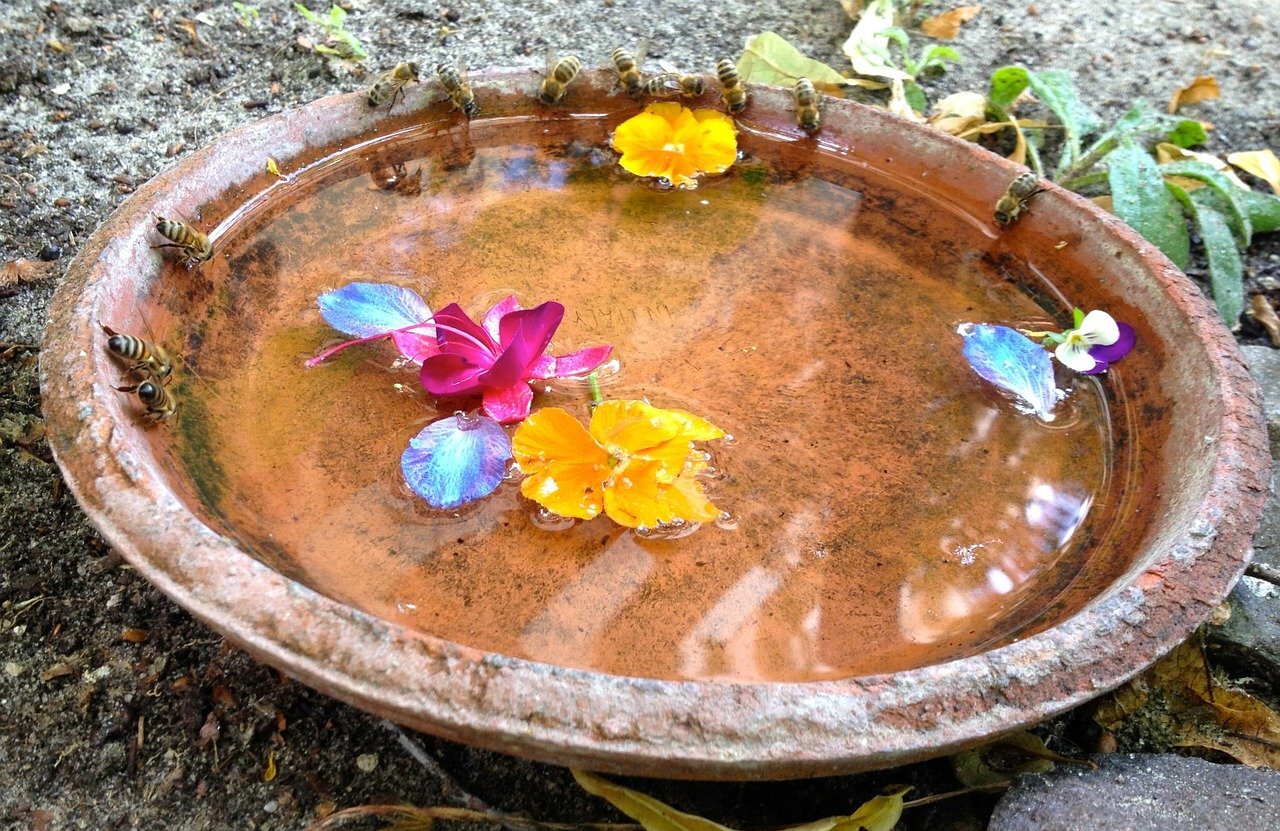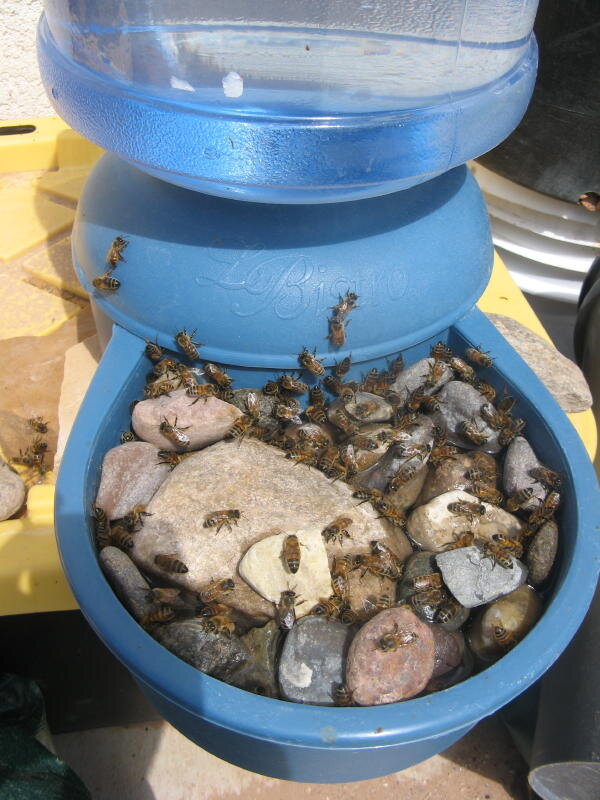How to create a safe bee watering station
Have you ever gone inside after a hot day, served yourself a glass of water, then breathed a sigh of relief when you felt the air conditioning? It felt pretty great, right?
That’s how bees feel when they have access to a safe, reliable water source.
Luckily, bees don’t require a KitchenAid fridge with the ability to pick between crushed and cubed ice. A simple, DIY honeybee waterer is all you need to hydrate your pollinators.
In this guide, we walk through our favorite bee waterer ideas.
Why is it important to provide a water source for bees?
Bees get thirsty, just like humans. They need a source of water to stay healthy and safe. Not only do bees drink the water, but they also use it for:
Air conditioning - During hot days, bees will spread a thin film of water over the baby bee cells. The water will evaporate, cooling the hive.
Feeding baby bees - Nurse bees feed developing larvae (aka baby bees) a diet of water, pollen, nectar, and royal jelly. This diet can be up to 80% water on the first day!
Diluting honey - Bees eat their own honey. Sometimes, the honey will crystallize or get too thick. When this happens, bees use water to dilute the honey and make it drinkable again.
But, can’t bees find their own source of water like a river or pond?
They absolutely can. However, not all beehives are near a natural source of clean water. In these cases, bees will look for water elsewhere.
For example, in a neighbor’s swimming pool or in a ditch. These sources of water may contain chlorine, pesticides, or other harmful chemicals.
5 DIY bee water station ideas
Bee watering stations are important—and really simple to set up! You can make yours as elaborate or simple as you’d like. Once you’ve decided on what kind of water station you want to use, just place it several feet away from your hive.
Invite bees to your bird bath
Bird baths make excellent bee waters because of how shallow they are. Bees can usually perch on the edge of the bath to drink. Remember, bees can’t swim, so if you want to keep them safe you can add pebbles to give them extra places to stand.
2. Fill a hummingbird feeder with water
A hummingbird feeder costs less than $15 is the perfect bee watering station. All you have to do is fill it with water instead of sugar syrup.
3. Add glass pebbles or marbles to a shallow container
Any craft store will sell bags of multi-colored pebbles. Get a bag or two and pour them into a wide, shallow container. It should be large enough to hold a few ounces of water, but not so big that bees will drown. This can be a large dish from your kitchen or even just a frisbee!
4. Put rocks in a self-filling pet bowl
If you don’t have the time to refill your bee watering station often, this is a great option. A small gravity-fed pet feeder usually holds a little under a gallon of water and costs about $15. Be sure to add rocks so you can provide water for bees without the drowning risk.
5. Use a plastic poultry feeder
Chicken feeders work just like gravity-fed pet bowls, but they’re a little more durable and stand up to the outdoors. Just like with our other suggestions, if the bowl of the feeder is more than a few centimeters deep you should add pebbles or marbles.
Frequently asked questions about bee water feeders
We hope this article got you inspired to create your very own bee water feeder. These are a few other common questions we get about bees and water:
Do bees drink water?
Yes, bees drink water. They also use it to regulate the temperature of the hive, feed young bees, and dilute stored honey. Some research suggests bees receive nutrients from water as well.
How do I attract bees to my water source?
Even though bees have five eyes, they still rely largely on scent. Water with a slight scent is more likely to attract bees. (This is why bees are often drawn to saltwater pools.) In our experience, we’ve found bees prefer water that’s a little bit dirty and has some plant growth.
You can also add a small amount of lemongrass oil or salt to your bee waterer to help the colony locate it. Once bees find your source of water, wait a few days and you can stop adding the attractant. If you have a green thumb, you can place your water station near flowers honeybees like.
Should I add sugar or honey?
Nope! While beekeepers occasionally feed bees sugar water, anything sweet in your water station will attract ants. Regular ol’ tap water is just fine.
How do I make sure my bee water feeder is safe?
The key is to offer water for bees without the drowning risk. If your water source is deep, simply add corks, sticks, or anything else that floats to give bees somewhere to perch.





